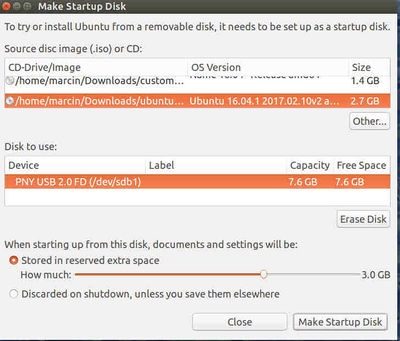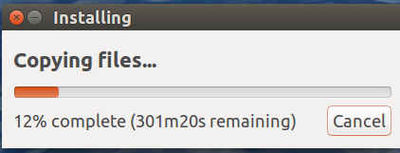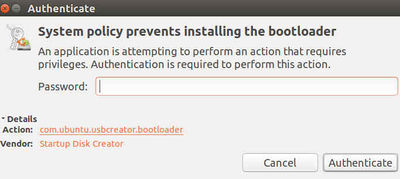ISO to USB: Difference between revisions
Jump to navigation
Jump to search
No edit summary |
No edit summary |
||
| Line 15: | Line 15: | ||
I tried running the USB anyway. Got to the boot choices screen, selected to boot from USB, but the new system did not load. Got a blank screen, nothing further happened. | I tried running the USB anyway. Got to the boot choices screen, selected to boot from USB, but the new system did not load. Got a blank screen, nothing further happened. | ||
== Alternative way for console== | |||
You can install the .iso file to a usb using just one command from the Terminal | |||
sudo dd if=[iso file] of=[destination device] | |||
where "iso file" is the source .iso file, and "destination device" is the file that was attached to the USB for example /dev/sdc1. If you do not know the device file, you can check it with the command "dmesg". | |||
Revision as of 23:55, 26 February 2017
- Instructions from [1] for Ubuntu Linux are shown here
- Use Startup Disk Creator to make a bootabl USB disk from an ISO File.
- If USB disk is not formatted, use Disks utility to format it. I formatted an 8GB disk to ext4, which is linux compatible only.
- Screenshots:
Everything looked ok until this point:
After I typed in my root password, I got an error message that the bootloader failed to install.
I tried running the USB anyway. Got to the boot choices screen, selected to boot from USB, but the new system did not load. Got a blank screen, nothing further happened.
Alternative way for console
You can install the .iso file to a usb using just one command from the Terminal sudo dd if=[iso file] of=[destination device] where "iso file" is the source .iso file, and "destination device" is the file that was attached to the USB for example /dev/sdc1. If you do not know the device file, you can check it with the command "dmesg".


